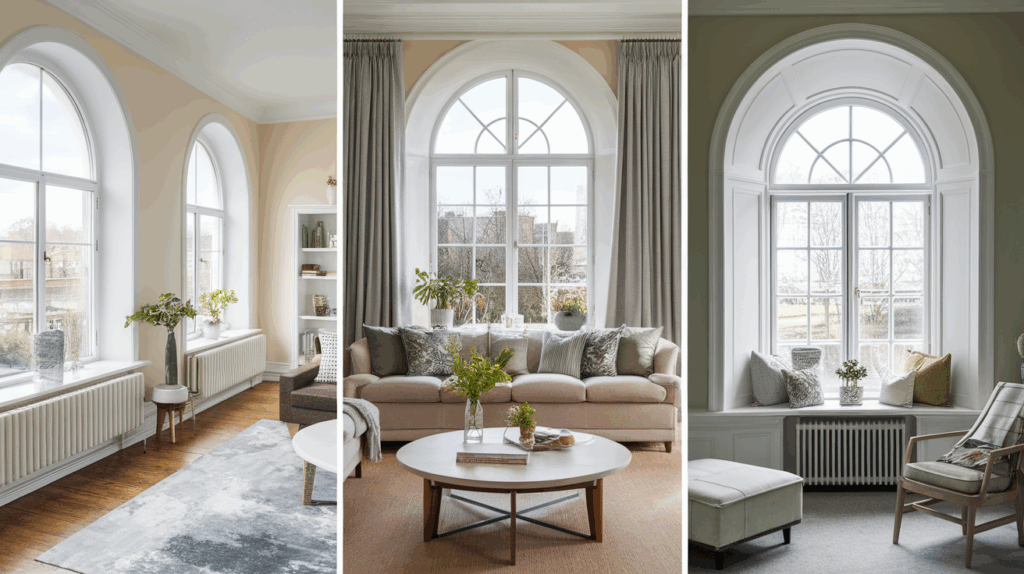Windows do more than just let in light and air; they play a big role in how my home looks, feels, and functions.
Once I started understanding how windows are built, it became a lot easier to clean them, fix small issues, or decide when it might be time for a replacement.
Knowing the different parts of a window has helped me talk to contractors with more confidence, shop for upgrades that really make sense, and take better care of the windows I already have.
From the frame to the glass, I’ve learned that every piece plays an important role. Some parts help keep my home warm or cool, others shield me from the wind and rain, and a few just add that extra touch of style.
In this blog, I’ll break down the anatomy of a window in a way that’s easy to follow. I’ll walk you through each main part and explain what it does, so you can feel more confident about the windows in your own home, too.
What Is the Anatomy of a Window?
When people talk about the “anatomy of a window,” they’re just talking about all the different parts that make up a window.
Like how your body has parts that work together, like arms, legs, and a heart, a window has parts too.
Each one has its job to help the window open, close, keep out the weather, and let in light.
Knowing these parts can really help, especially if you’re trying to fix a window, upgrade your home, or talk to a contractor.
You’ll understand what they mean when they say things like “jamb” or “sash.” It also helps you spot problems before they get worse, like leaks or drafts.
In the next sections, I’ll break down the main parts of a window one by one, so you can feel confident about how your windows work and what they need.
Basic Window Frame Parts Explained
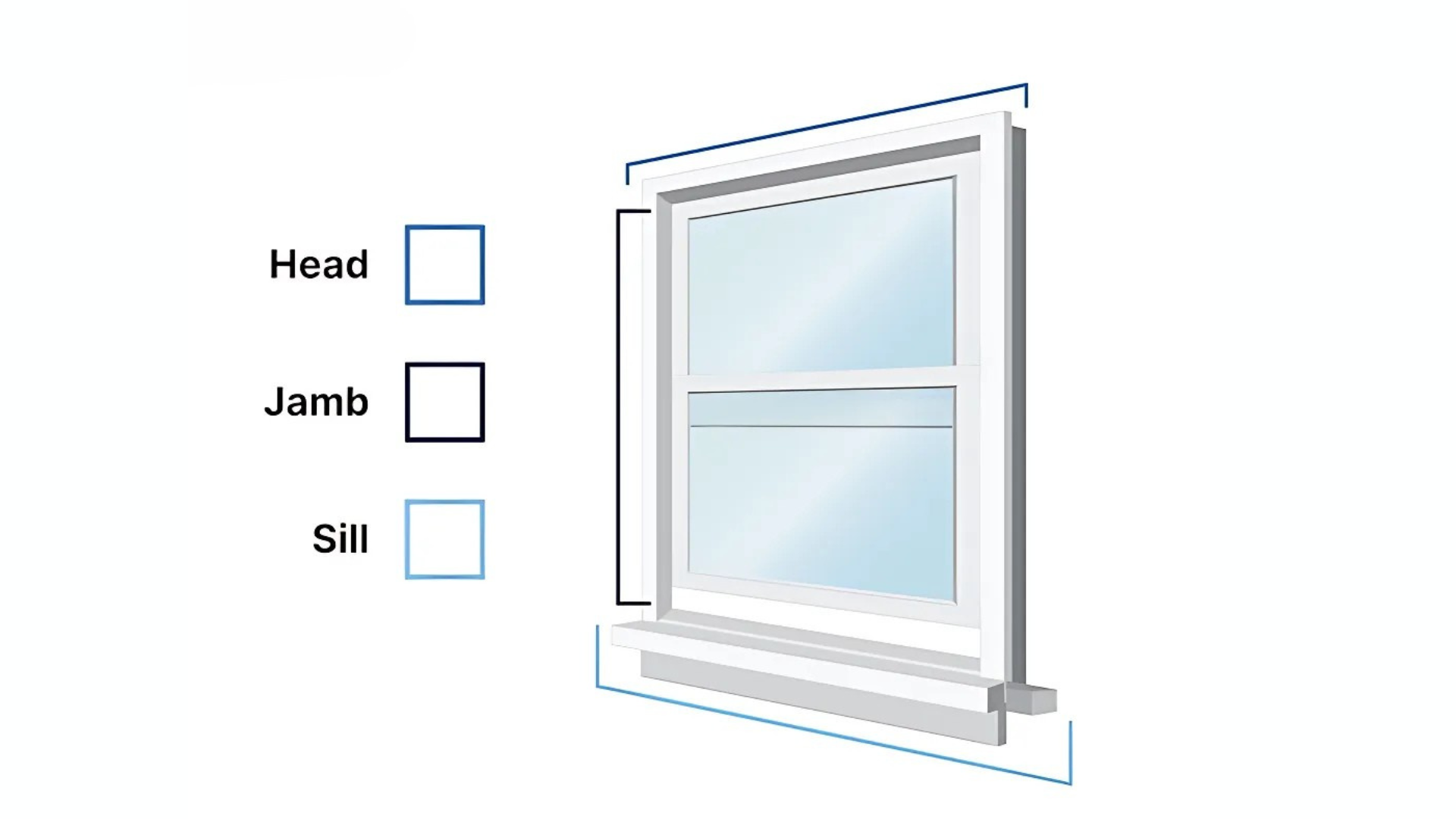
The window frame is like the skeleton of your window; it holds everything together and connects the window to the wall.
Even though it might look like just a simple border, it’s made up of several different parts that each have an important job.
1. Head (Top of the Frame)
The head is the top horizontal part of the window frame. It sits right above the glass and helps hold everything in place.
Think of it like the top part of a picture frame. It also helps block drafts, rain, and bugs from coming in at the top of your window.
2. Jambs (Sides of the Frame)
The jambs are the vertical pieces on the left and right sides of the window. They connect the head (top) to the sill (bottom) and form the sides of the frame.
These parts help support the sash, the part of the window that holds the glass, and keep it snug in place so it can open and close smoothly.
3. Sill (Bottom of the Frame)
The sill is the bottom part of the frame. It’s usually sloped slightly so rainwater can drain away from the window instead of pooling inside.
The sill is important because it helps keep your window dry and prevents damage to your walls and floors.
On the inside of your home, this part may also have a ledge where people sometimes place plants or decorations.
Each part of the frame plays a role in keeping your window strong, safe, and energy-efficient.
If even one part gets damaged, you might notice drafts, leaks, or even trouble opening and closing your window. That’s why it’s helpful to know what each piece does.
Common Frame Materials
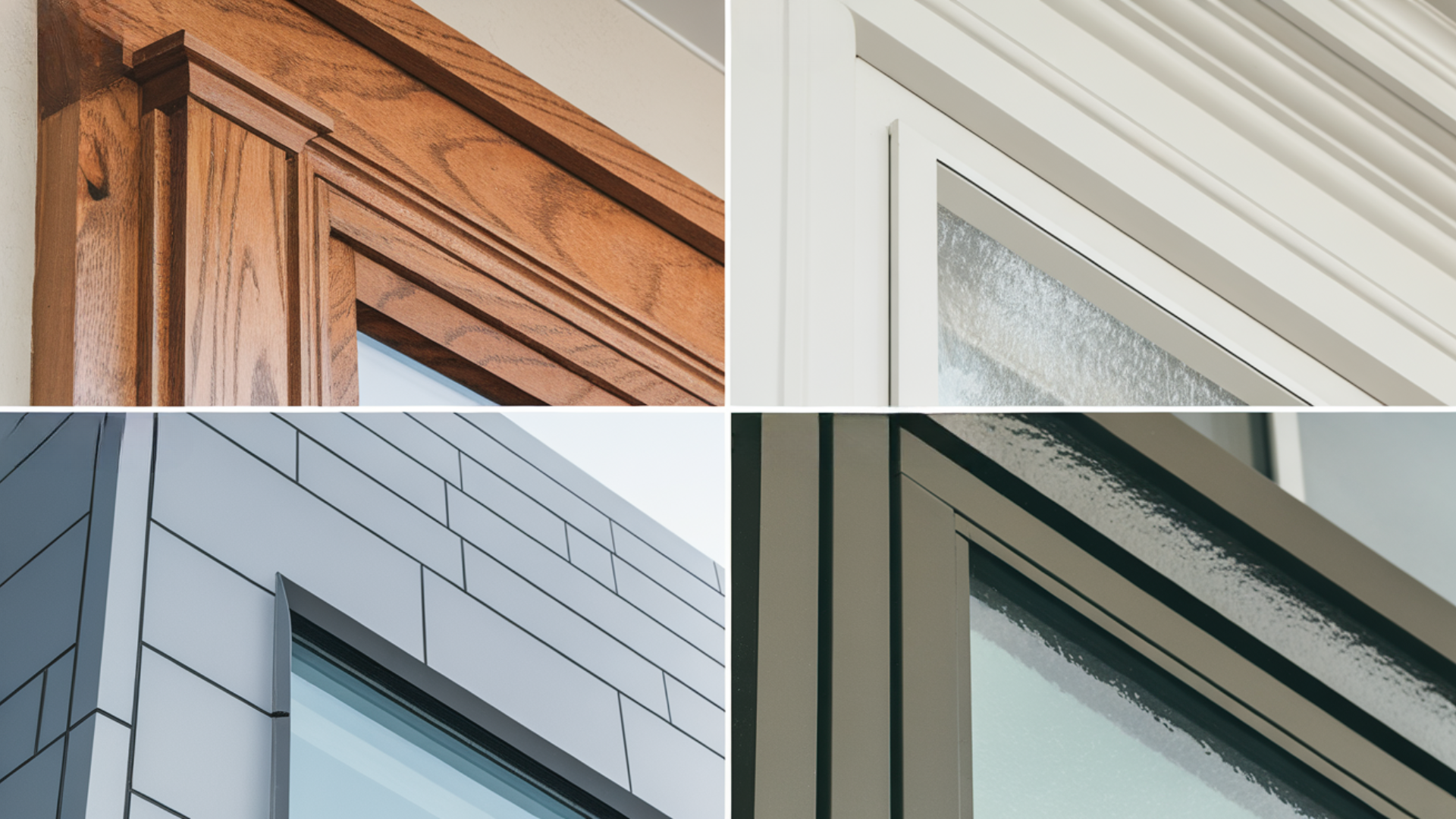
Window frames come in different materials. Each one has its pros and cons:
- Wood: Looks great and insulates well, but needs regular upkeep to avoid rot.
- Vinyl: Easy to care for, doesn’t rot, and is budget-friendly.
- Aluminum: Very strong and long-lasting, but not the best at keeping out heat or cold.
- Fiberglass: A newer option that’s tough, energy-efficient, and low-maintenance.
When choosing a window, the frame type matters as much as the glass. It affects how long your window lasts, how much upkeep it needs, and how well it keeps your home comfortable.
What Is a Window Sash and What Does It Do?
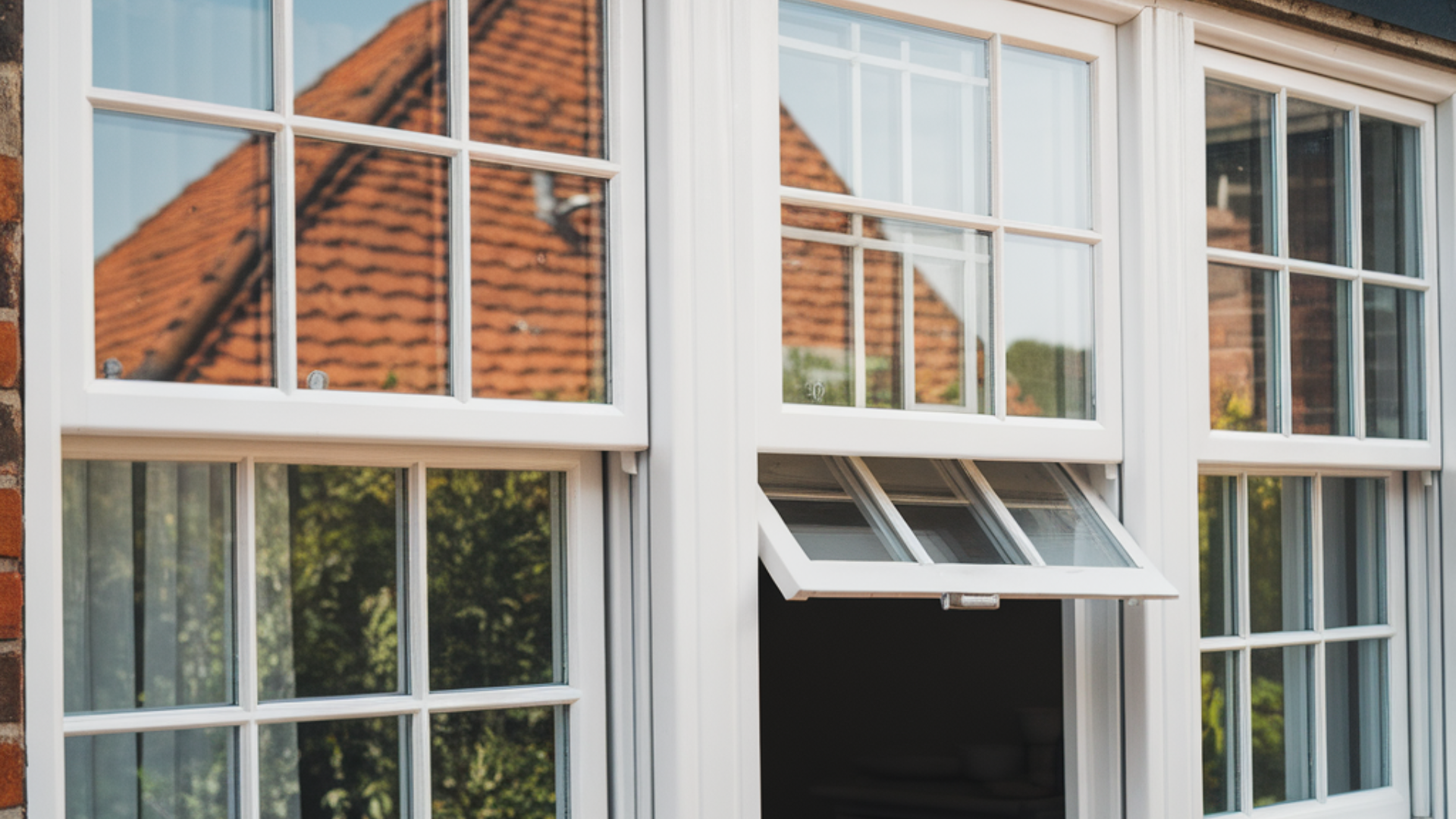
The window sash is the part of the window that actually holds the glass.
It fits inside the window frame and can either move or stay in place, depending on the type of window you have. If your window slides up and down or swings open, the sash is the part that moves.
Sashes are super important because they keep the glass steady and help your window open and close smoothly.
Without a sash, your window would be a loose piece of glass, not very safe or useful!
Parts of a Window Sash:
- Rails: These are the horizontal pieces at the top and bottom of the sash.
- Stiles: These are the vertical pieces on the left and right sides of the sash.
Together, the rails and sills form a strong frame around the glass. They hold everything in place and help the window move as it should.
If your sash is damaged or warped, you might notice drafts or have trouble opening your window. That’s a sign that it may need repair or replacement.
Types of Glass and Window Glazing
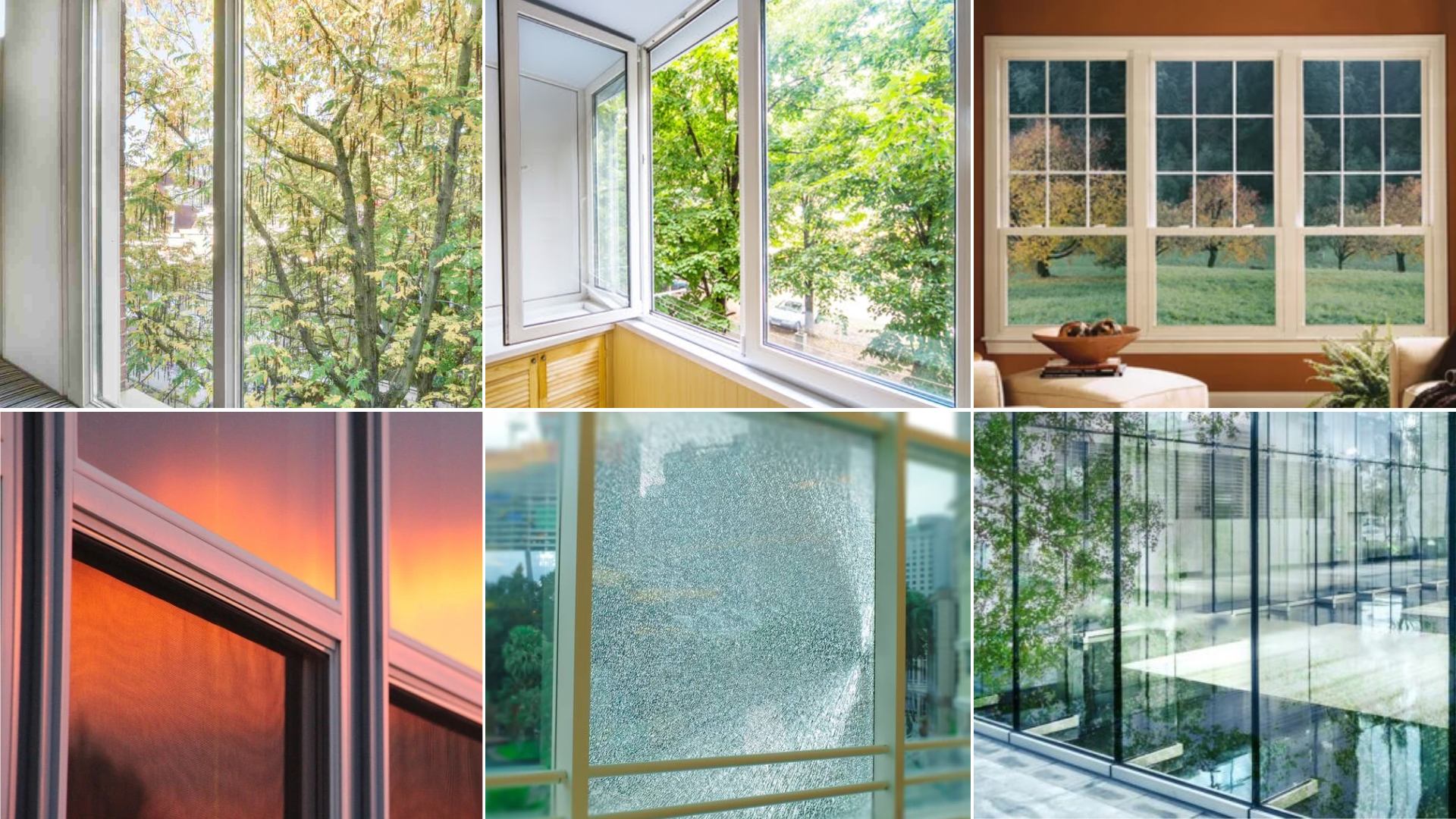
When it comes to windows, the type of glass you choose really matters. Glass isn’t just about seeing through; it also plays a big role in keeping your home warm, quiet, and safe.
You’ve probably heard terms like “double-pane” or “glazing,” but what do they actually mean?
Glazing refers to the number of layers of glass in a window and how those layers are built to protect your home.
The more layers and special coatings a window has, the better it is at keeping heat in, blocking out noise, and saving energy.
| Type | What It Means | Best For |
|---|---|---|
| Single-pane | One layer of glass, no insulation. | Old homes or sheds in mild climates |
| Double-pane | Two layers of glass with air or gas in between. | Most modern homes |
| Triple-pane | Three layers of glass with extra insulation. | Very cold or noisy areas |
| Low-E Glass | Glass with a thin coating to reflect heat and UV rays. | Energy savings and sun protection |
| Tempered Glass | Heat-treated glass is much stronger and safer if broken. | Safety areas like bathrooms or doors |
| Laminated Glass | Two panes with plastic in between to hold together if shattered. | Extra security and soundproofing |
As you can see, there are many glass options depending on where you live and what you need.
Whether you want to save money on energy bills, block out traffic noise, or add extra safety, picking the right glass makes a big difference.
Decorative Window Parts You Should Know
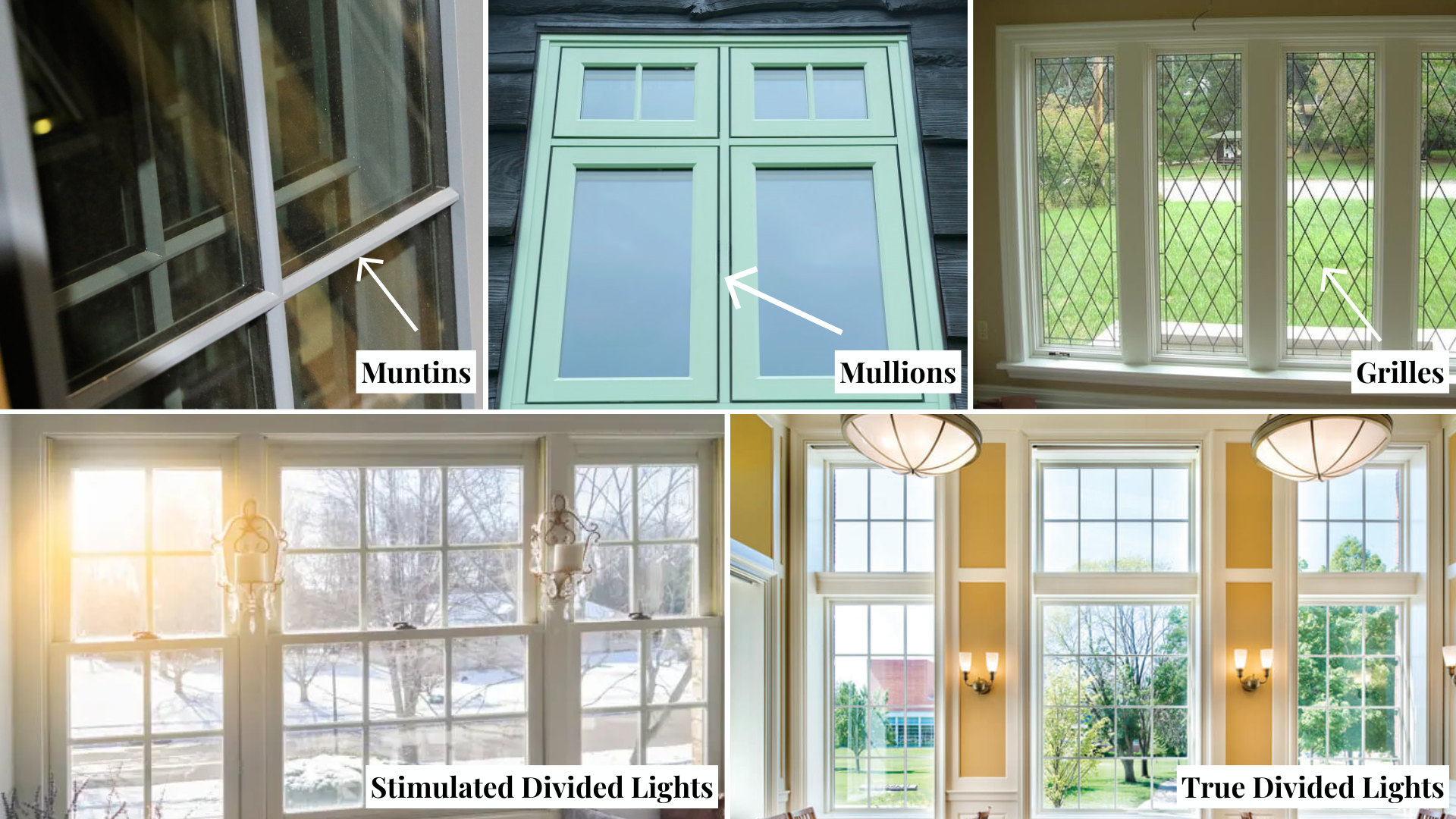
Windows aren’t just about function, they also add style to your home. Some parts of a window are purely decorative or give your window a classic look while still offering support.
If you’ve ever seen windows with small square panes or fancy designs, you’ve probably noticed some of these decorative pieces.
1. Muntins: Muntins are the thin strips that divide a window’s sash into smaller sections of glass. They make it look like there are lots of little panes, even if there’s just one big piece of glass behind them.
2. Mullions: Mullions are the larger vertical or horizontal bars that sit between two separate windows. They provide support and give grouped windows a bold, framed look.
3. Grilles (or Grids): Grilles are decorative patterns placed on or between the glass panes. They can be in different shapes, like squares or diamonds, and they give the window a classic or stylish appearance.
4. Simulated Divided Lights (SDLs): These look like true divided panes but are just decorative pieces attached to a single glass panel. They give you the style of small panes without the extra maintenance.
5. True Divided Lights (TDLs): These are real individual panes of glass separated by muntins. They’re more traditional and often found in older or historic homes.
Decorative window parts may not affect how your window works, but they can change how it feels.
Whether you’re going for a farmhouse vibe or a clean modern look, these little details make a big difference.
Next, we’ll check out the hardware that helps your windows open, close, and stay secure.
Window Hardware and Trim Parts
Windows aren’t just made of glass and frames. They also have smaller parts that help them work well and look nice.
These include hardware like locks and handles, as well as trim pieces that finish off the window’s edges.
These parts may seem small, but they play a big role in how your window looks, opens, and stays secure.
Window Hardware
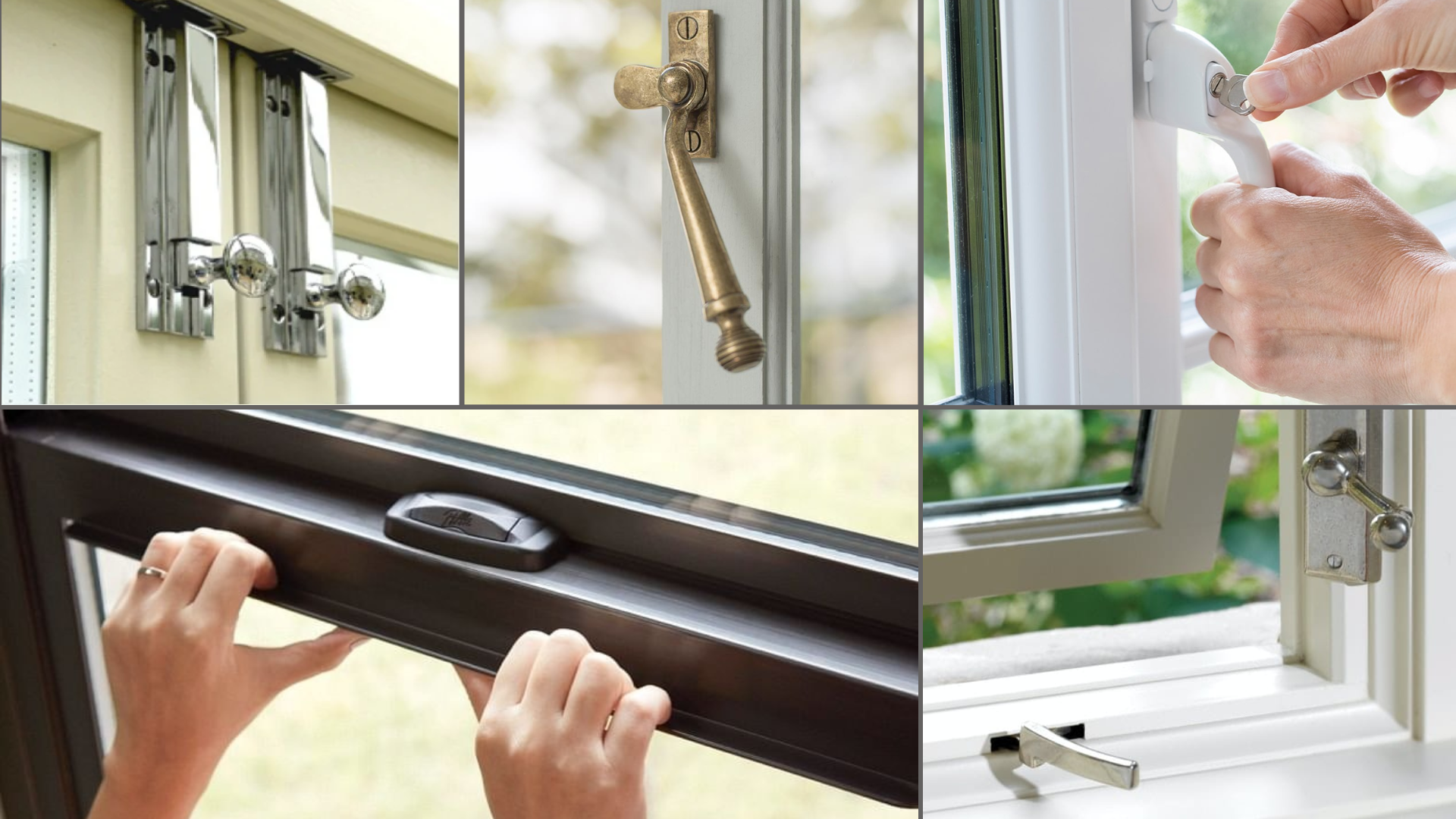
- Locks and Latches: These keep your window shut tight and help protect your home. Some locks are simple, while others have extra safety features. They’re usually found on sliding or double-hung windows.
- Handles and Cranks: These are found on casement or awning windows. You use a handle or turn a crank to open and close the window easily.
- Balancers and Springs: These help hold the window sash in place and let it move smoothly. They’re hidden inside the frame and are especially important for windows that slide up and down.
Window Trim
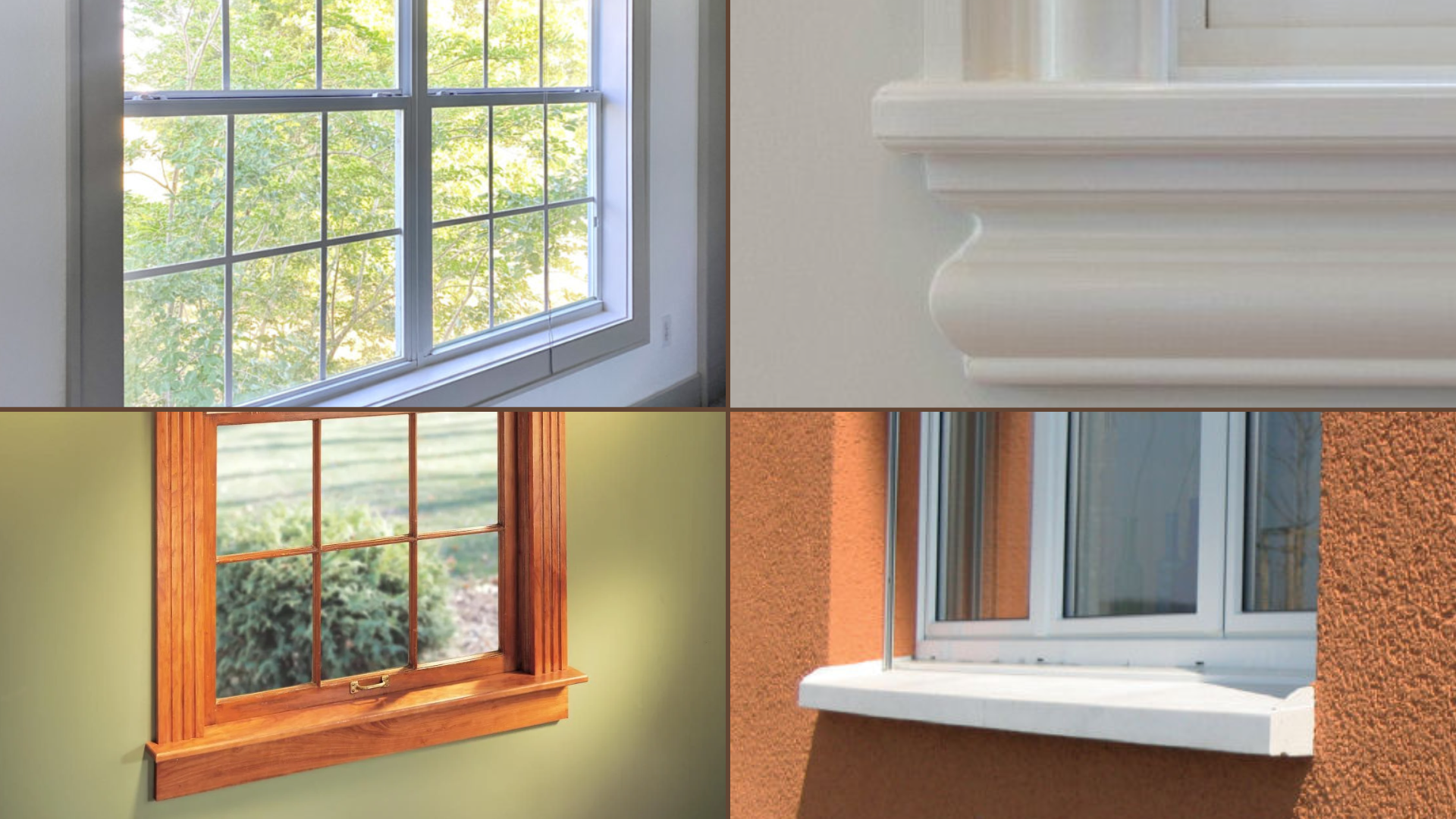
- Casing: This is the molding around the outside edge of the window on the inside wall. It covers the gap between the window frame and the wall and gives a neat, finished look.
- Apron: The apron is the decorative piece of trim that sits below the window sill on the inside of the home. It’s mostly for looks, but it helps complete the window design.
- Stool: The stool is the flat part at the bottom of the window frame on the inside. It sticks out a bit and acts like a small shelf—you might even set a plant or decoration on it.
- Sill (Exterior): This is the bottom part of the window on the outside. It’s sloped so rainwater can run off instead of sitting near the house, helping prevent water damage.
Knowing about window hardware and trim helps you see how everything works together to keep your windows safe, smooth, and stylish.
Next, let’s discuss energy-saving features that help your windows do even more for your home.
Window Maintenance Tips You Should Know
Taking care of your windows doesn’t have to be hard, but regular maintenance can make a big difference.
Start by cleaning the glass and frames with mild soap and water to keep dirt and dust from building up.
Check the locks, handles, and moving parts every few months to ensure smooth operation. A little oil on the hinges or tracks can help prevent sticking.
Look for signs of wear, such as cracked caulk, loose seals, or peeling paint; these can let in drafts or moisture.
If you have wooden frames, watch out for rot or mold, especially after heavy rain. Sealing or painting the trim every few years can help protect it.
Keeping your windows in good shape not only helps them last longer, but it also keeps your home safe, energy-efficient, and looking great all year round.
Conclusion
Windows do more than let in light; they help with comfort, safety, and even energy savings.
Understanding the basic anatomy of a window can help you make better choices about repairs, replacements, or upgrades.
Each part, from the frame and sash to the glass and trim, plays an important role in how your window works and looks.
Knowing the names and functions of these parts can help you spot problems early and keep your windows in good shape.
It also makes it easier to talk to a contractor or choose new windows for your home.
Whether you’re fixing a small issue or planning a full replacement, a little knowledge goes a long way.
With the right care and attention, your windows can last for years and continue to bring beauty and function to your home.

